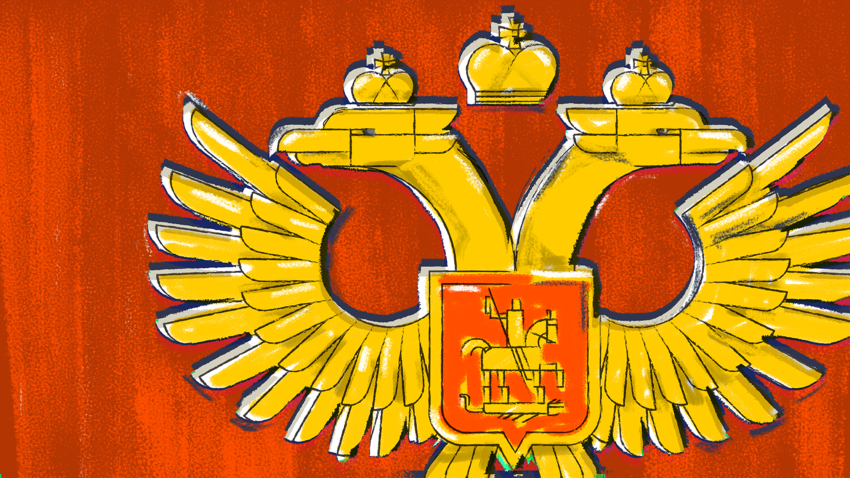
The bird has to face both West and East - so two heads come in handy
Natalya NosovaAn eagle on a country’s coat of arms is quite common – this bird is as popular a national symbol as the lion. “He is the king of birds; just like the lion is believed to rule all animals, and he is associated with the cult of the sun,” Georgy Vilinbakhov, head of Russia’s Heraldic Council, explains.
The eagle has been emblazoned on the insignia of numerous empires. Roman legions held standards with the glorious birds when going into battle, and even today many countries have eagles on their official coats of arms. In the U.S., the Great Seal features a bald eagle holding 13 arrows and an olive branch. Meanwhile, a black eagle is on Germany’s coat of arms.
Russia’s eagle, however, is special – it’s double-headed, with each head looking in opposite directions. Still, this is not unique: Serbia, Albania
The double-headed eagle is an old birdie, and its first images (carved in stone) are attributed to the Hittites who lived in the Middle East in the 13th century B.C. Since then, the double-headed eagle has appeared from time to time both in East and West. However, it was the Byzantine Empire (395 AD – 1453) that saw this bird soar to new heights.
Historian Yevgeny Pchelov said in a lecture on the history of Russia’s coat of arms that while the Byzantines didn’t have an official coat of arms, the double-headed eagle appeared on the emperors’ clothes and coins, symbolizing unity. “They wanted to emphasize that the empire united both East and West under its wings,” Pchelov explained. “The eagle has two heads, but just one body.”
Most historians believe that all the nations associating themselves with the double-headed eagle inherited this from Byzantium through dynastic marriages. “In the Middle Ages, you couldn’t just take the other country’s symbol simply because you liked it; it was a sign of an alliance, of good relations,”
That’s how Serbia, Albania and Montenegro got their coats of arms, and Russia followed suit. In 1472, Ivan III, Moscow’s Grand Prince, married Byzantine princess Sophia Palaiologina. Several decades later, in 1497, the first official Russian seal with the double-headed eagle appeared.
Embracing the Byzantine heritage was extremely important for Ivan. In 1453, the Turks had captured Constantinople, and so Russia became the leading Orthodox power. Thus, the wings of its own double-headed eagle began to cover both West and East.
“Before the Byzantine Empire ceased to exist, it always was perceived as a greater power. And even after its fall, Russian rulers wanted to associate Russia with the Byzantine symbol,” Yevgeny Pchelov explained.
In Russia, the double-headed eagle was always accompanied by another national symbol: a horseman slaying a serpent with a spear, portrayed on a shield. The horseman is a symbol of Russia’s capital, Moscow, and usually represents St. George the Victorious. However, since Russia is a secular state, this interpretation is unofficial.
The coat of arms has changed throughout history, with the eagle changing from gold to black, and then back to its current gold. Also, it has gained and lost the crowns over its heads. Currently, each head is topped with another crown ‘floating’ between them, which once more symbolizes unity. In its talons, the eagle holds an orb and a scepter – symbols of power and authority.
The current interpretation of the coat of arms is quite similar to those used in the Russian Empire. After the monarchy was overthrown in 1917, the eagle became white (maybe it just turned pale). With the Bolsheviks in power, the bird had a rest for about 70
This article is part of the "Why Russia…?" series in which RBTH answers popular questions about Russia.
If using any of Russia Beyond's content, partly or in full, always provide an active hyperlink to the original material.
Subscribe
to our newsletter!
Get the week's best stories straight to your inbox